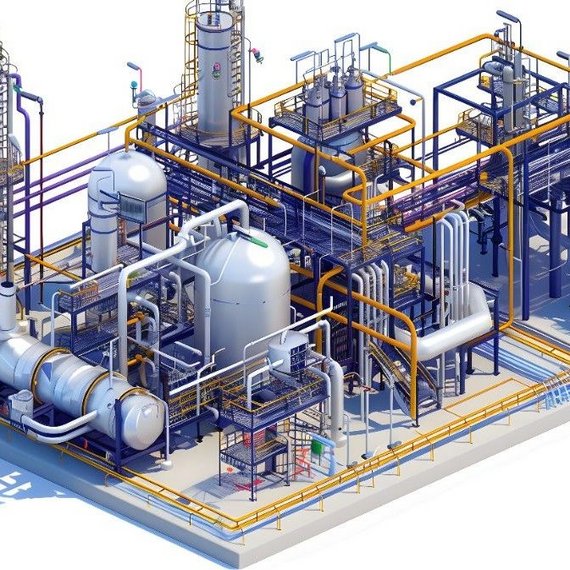Our services

Columns
We specialize in engineering process separation columns, including distillation, washing, stripper, and drying columns, as well as high-performance dividing wall columns designed for optimal energy efficiency.
Once the concept has been selected and the initial technical scope of the system has been defined, all expected costs and expenses are determined in basic engineering.
What exactly is included in basic engineering?
At DMT ENCOS, basic engineering covers a wide range of activities. The scope of these activities depends largely on the scope of the project and therefore the product to be created. In addition, the required expertise in the manufacturing process of the system is crucial for the planning effort as part of basic engineering. The essential and recurring service steps are explained in more detail below.
From process development to large-scale plant
The selected process determines the type and necessary sequence of the basic process engineering operations. To visualise a process engineering process, basic flow diagrams are created in basic engineering and discussed for further coordination in the planning phase.
Among other things, the basic flowsheet defines the reactants and assigns them to the corresponding storage facilities. The reaction products as well as the processing stages and their final storage are also recorded in such a basic flowsheet and are therefore also part of the process development. The following steps are required in advance to achieve optimum process engineering:
In order to minimise the time and material expenditure as much as possible, DMT ENCOS also uses appropriate simulation programmes such as ASPEN to calculate the corresponding basic process engineering operations.
Balancing as the central task of the process engineer
The design of a process engineering system is the responsibility of the process engineer. The aim is to design a system in such a way that the investment and operating costs are in balance and the required product properties in terms of quantity and quality are met at the same time. To achieve this, material, mass and enthalpy balances are drawn up both for the individual process stages and for the future overall plant.
At the interfaces, the so-called plant boundaries, they are used to further determine the raw material and energy consumption as well as the product and waste quantities. Within the process plant, the balances determine the mass flows and the physico-chemical conditions to be complied with. The results of the balances are then documented in the media data sheets.
The creation of basic and process flow charts is one of the basic disciplines at DMT ENCOS
Flowcharts are among the most important documents in basic engineering. They are created in three levels of detail:
While basic and process flow diagrams must be created as part of basic engineering, the essential processing of detailed pipework and instrumentation diagrams (P&IDs) only takes place in the subsequent step (plant construction), known as detail engineering. Customer specifications are provided or agreed between the planner and operator for the creation of the flow diagrams. The process flow diagram is used to visualise the process engineering concept and thus clearly represents the next level of detail above the basic flow diagram. All essential components can be found here:
What is included in the material concept?
Before DMT ENCOS can start planning the main equipment, the materials to be used in the future process technology must be determined and documented. The materials selected not only have an impact on the existing design of the pipework and equipment, but also on their procurement costs.
The material design is of particular importance here, as warranty claims must ensure that these materials can withstand the corresponding stresses caused by corrosion and wear over a long period of time. ENCOS engineers can draw on many years of experience in strength, corrosion and wear behaviour. When defining the material concept, the process engineers must take the following points into account:

We specialize in engineering process separation columns, including distillation, washing, stripper, and drying columns, as well as high-performance dividing wall columns designed for optimal energy efficiency.

Our supplementary services create real added value: from digital project management and sustainability consulting to operational optimization - we support you throughout all project phases.